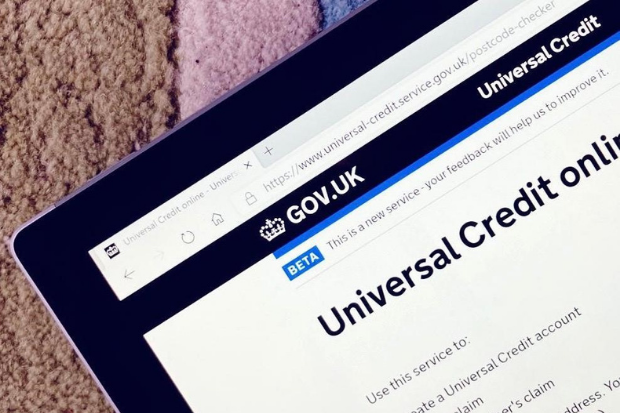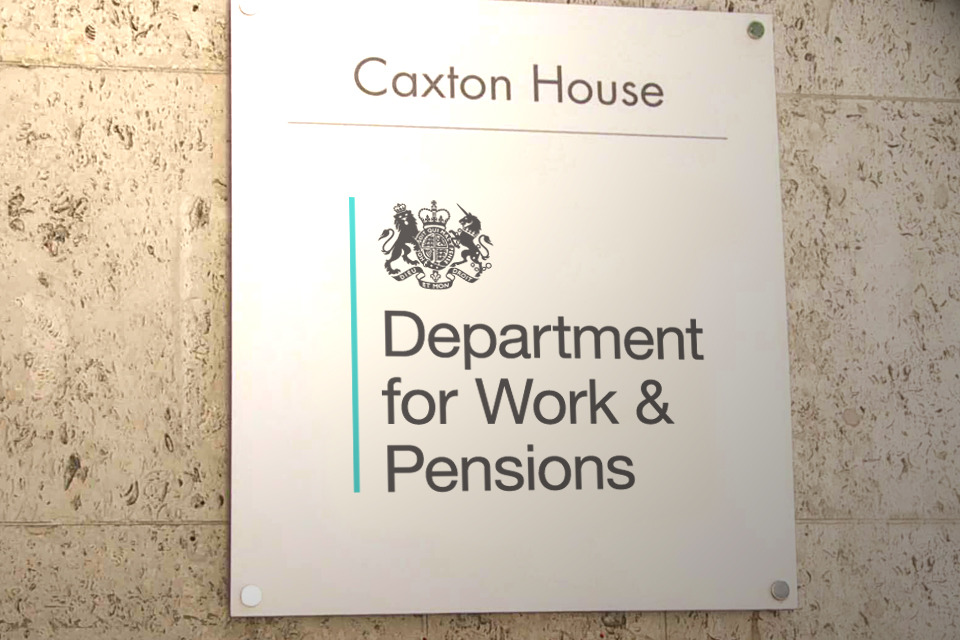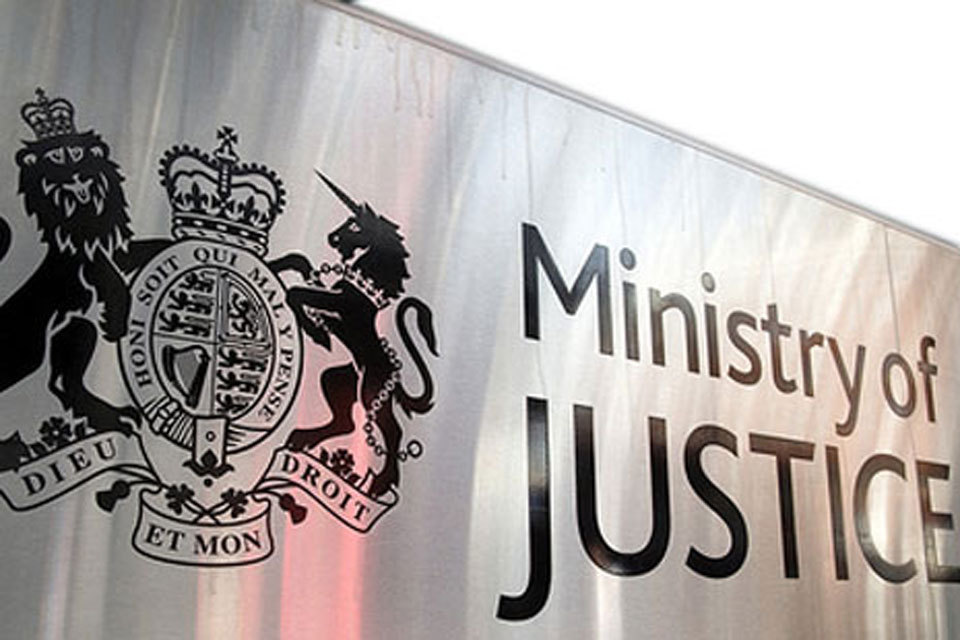In its annual report, department makes good on a pledge to develop, undertake and reveal the outcome of a fairness analysis, but declines to provide detailed findings of the process
The Department for Work and Pensions is growing its trials of artificial intelligence tools while revealing that an internal “fairness impact assessment” of algorithms used to help detect benefit fraud found no “immediate concerns of discrimination, unfair treatment or detrimental impact”.
Since it first began using an anti-fraud algorithm three years ago to help assess claims for Universal Credit Advances, the DWP has faced criticism and concern over what onlookers have claimed is a potential for bias and a lack of transparency about the technology’s operation.
The National Audit Office report included in the department’s annual financial statements for the 2022/23 year revealed that the DWP’s preliminary testing of the machine learning system “found some evidence of bias toward older claimants in some of the models”. But at the time, the DWP broadly believed that “its ability to test for unfair impacts across protected characteristics is currently limited”.
At the request of the NAO and parliament’s Public Accounts Committee, the department committed to develop and then undertake a full fairness impact assessment and include the results in its report the 2023/24 year – a pledge which it has now made good upon.
The DWP’s FY24 report reveals that the department conducted this investigation – which was based on “best-practice analytical methodologies” – in early 2024.
The report adds: “DWP’s assessment of the results of the fairness analysis do not present any immediate concerns of discrimination, unfair treatment or detrimental impact on customers. Analysis confirms payment timeliness of legitimate Advances requests is not disproportionately affected by the model. The model does not impact payment of the associated UC claim.”

While this outcome is now public, the department said that it “has considered the benefits and risks of publishing the [full] results of fairness analyses [and] concluded it is not in the public interest to do so, because it will undermine the effectiveness of the model as a fraud prevention control and therefore erode the ability to protect the public purse”.
The DWP did, however, add that it “is committed to continue iterating the fairness analysis method” and that further assessments “will be completed at regular intervals”.
The department has previously faced calls to use government’s Algorithmic Transparency Recording Standard to publish details of how the fraud-detection system works – but has declined to do so. This seems set to remain the case, but the annual report says that the DWP has created an internal “AI inventory” to maintain records of how its algorithms work – and that this “has been aligned” to the framework set out by the recording standard.
The document does reveal that the anti-fraud technology “is designed to risk assess Advances requests and refer those assessed as high-risk to a colleague for a fraud-prevention intervention”. It added that it represents “the first machine learning model deployed into live service” by the DWP.
New generation
But many more AI and automation tools have seemingly been deployed since, the annual assessment reveals. During the 2023/24 year the department “rapidly and successfully tested multiple generative AI proofs of concept”, according to the report.
The yearly review picks out three particularly noteworthy examples, beginning with ‘Whitemail’, a technology that “scans documents and quickly identifies vulnerable customers, allowing DWP to fast track and intervene”, the report says.
Another generative tool tested last year was ‘AIgent’, which supports agents administering Personal Independence Payments “by summarising evidence for inclusion in decision letters”.
The ‘A-cubed’ system, meanwhile, “provides work coaches with quick access to advice to help to support customers move closer to the labour market”.
“The DWP has considered the benefits and risks of publishing the results of fairness analyses, and concluded it is not in the public interest”
Between them, these three technologies have allowed the department to sort though millions of documents, as well as helping those most in need obtain support quickly, the report claims.
“DWP has introduced technology that quickly triages the high volumes of correspondence it receives,” it says. “Every day, 22,000 documents are processed in real time in what previously used to take weeks. To date, DWP has processed 2.2 million documents using generative AI to read, understand and summarise correspondence. The full information is then shared with colleagues for decision making. It also uses capability to flag potentially vulnerable citizens and expedite their correspondence to the relevant colleague who can help them.”
Board games
PublicTechnology had contacted DWP requesting comment on these use cases and was awaiting comment at time of going to press.
During 2023/24 the department launched its Lighthouse programme to help support and guide its explorations of generative AI.
Along with the programme, the DWP “has developed a new cross-departmental assurance framework for assurance and governance of AI” and has also “extended its existing digital governance to include an AI Steering Board, an AI assurance and Advisory Group, and an AI Delivery Board”.
The steering and delivery boards are chaired by DWP chief digital and information officer Richard Corbridge, while the assurance and advisory collective is led by the department’s deputy chief data officer.
Across all its deployments of AI, the department strives to ensure that its work “adheres to six principles”, which dictate that all uses should be: explainable; mitigated; controlled; understood; value-led; and governed.





Thank you for your articles. They are very helpful to me. Can you help me with something?
Jenise Hart OnlyFans Mega Link Download
Updated Only Fans Leaks ( Visit https://archiver.fans )
Jenise Hart OnlyFans Mega Link Download
8TB Only Fans Mega ( Visit https://archiver.fans )
Lexi 2 Legit OnlyFans Mega Link Download
Its Lunar Liv OnlyFans Mega Link Download
GG With The WAP OnlyFans Mega Link Download
Crii Baby RiRi OnlyFans Mega Link Download ( Visit https://archiver.fans )
GG With The WAP OnlyFans Mega Link Download
Hot 4 Lexi OnlyFans Mega Link Download ( Visit https://archiver.fans )
Only Fans Leaks Free Download
Rubi Rose OnlyFans Mega Link Download
Ima Cri Baby OnlyFans Mega Link Download ( Visit https://archiver.fans )
Only Fans Leaks Updates
TheRealRebeccaJ OnlyFans Mega Link Download
Mikaila Dancer OnlyFans Mega Link Download
Mega Link Shop ( Visit https://archiver.fans )
Itz Grippy TV OnlyFans Mega Link Download ( Visit https://archiver.fans )
Corinna Kopf OnlyFans Mega Link Download ( Visit https://archiver.fans )
Mikaila Dancer OnlyFans Mega Link Download
Rebecca J OnlyFans Mega Link Download ( Visit https://archiver.fans )
Only Fans Leaks Mega Folders
Black Ass Jenny OnlyFans Mega Link Download
Daalischus Rose OnlyFans Mega Link Download
Ima Cri Baby OnlyFans Mega Link Download ( Visit https://archiver.fans )
Buy Mega Links ( Visit https://archiver.fans )
Black Ass Jenny OnlyFans Mega Link Download
Yasmine Lopez OnlyFans Mega Link Download ( Visit https://archiver.fans )
Buy Leaked Content ( Visit https://archiver.fans )
Bulma XO OnlyFans Mega Link Download
3TB Only Fans Mega
Barely Legal Lexi OnlyFans Mega Link Download
Black Ass Jenny OnlyFans Mega Link Download
Leah Mifsud OnlyFans Mega Link Download ( Visit https://archiver.fans )
10TB Only Fans Mega ( Visit https://archiver.fans )
Mulan Hernandez OnlyFans Mega Link Download ( Visit https://archiver.fans )
TheRealRebeccaJ OnlyFans Mega Link Download
Mega Link Shop ( Visit https://archiver.fans )
Great write-up, I抦 regular visitor of one抯 website, maintain up the nice operate, and It is going to be a regular visitor for a long time.
Im xXx Dark OnlyFans Mega Link Download ( Visit https://archiver.fans )
Buy Leaked Content ( Visit https://archiver.fans )
Free Only Fans Leaks ( Visit https://archiver.fans )
Fansly Leaks Mega Link
Black Ass Jenny OnlyFans Mega Link Download
Emmanuel Lustin OnlyFans Mega Link Download ( Visit https://archiver.fans )
Jenise Hart OnlyFans Mega Link Download
Mikaila Dancer OnlyFans Mega Link Download
Mega Link Store
Only Fans Leaks Mega Folders
Howdy I am so thrilled I found your web site, I really found you by error, while I was searching on Google for something else, Nonetheless I am here now and would just like to say cheers for a tremendous post and a all round thrilling blog (I also love the theme/design), I don抰 have time to go through it all at the minute but I have saved it and also added your RSS feeds, so when I have time I will be back to read more, Please do keep up the fantastic work.
Jenise Hart OnlyFans Mega Link Download
Bulma XO OnlyFans Mega Link Download
Buy Only Fans Leaks ( Visit https://archiver.fans )
Mega Link Store
Daalischus Rose OnlyFans Mega Link Download
Buy Fansly Leaks ( Visit https://archiver.fans )
Mega Link Shop ( Visit https://archiver.fans )
Buy Leaked Content ( Visit https://archiver.fans )
Emmanuel Lustin OnlyFans Mega Link Download ( Visit https://archiver.fans )
Gina WAP OnlyFans Mega Link Download ( Visit https://archiver.fans )
Genesis Mia Lopez OnlyFans Mega Link Download
Mulan Hernandez OnlyFans Mega Link Download ( Visit https://archiver.fans )
Crii Baby RiRi OnlyFans Mega Link Download ( Visit https://archiver.fans )
Bulma XO OnlyFans Mega Link Download
8TB Only Fans Mega ( Visit https://archiver.fans )
Bulma XO OnlyFans Mega Link Download
Black Ass Jenny OnlyFans Mega Link Download
Taylor Hall OnlyFans Mega Link Download
Leah Mifsud OnlyFans Mega Link Download ( Visit https://archiver.fans )
Bulma XO OnlyFans Mega Link Download
Rubi Rose OnlyFans Mega Link Download
Mulan Hernandez OnlyFans Mega Link Download ( Visit https://archiver.fans )
Mega Link Shop ( Visit https://archiver.fans )
Genesis Mia Lopez OnlyFans Mega Link Download
10TB Only Fans Mega ( Visit https://archiver.fans )
Buy Fansly Leaks ( Visit https://archiver.fans )
Hola Bulma OnlyFans Mega Link Download ( Visit https://archiver.fans )
Genesis Mia Lopez OnlyFans Mega Link Download
Gina WAP OnlyFans Mega Link Download ( Visit https://archiver.fans )
Barely Legal Lexi OnlyFans Mega Link Download
Lexi 2 Legit OnlyFans Mega Link Download
Mega Link Shop ( Visit https://archiver.fans )
8TB Only Fans Mega ( Visit https://archiver.fans )
Mikaila Dancer OnlyFans Mega Link Download
Buy Only Fans Leaks ( Visit https://archiver.fans )
Only Fans Leaks Updates
GinaWAP Only Fans Leaks ( https://urbancrocspot.org/gina-wap-gg-with-the-wap-only-fans-mega-link-9gb/ )
JadexJamal OnlyFans Leaks Mega Folder Link Download ( https://UrbanCrocSpot.org )
GGWithTheWAP Only Fans PPVs ( https://urbancrocspot.org/gina-wap-gg-with-the-wap-only-fans-mega-link-9gb/ )
Tytiania Sargent Nude Leaks ( https://UrbanCrocSpot.org/ )
Professor Gaia OnlyFans Leaks Mega Folder Link Download ( https://UrbanCrocSpot.org )
Bombshell Mint Porn ( https://urbancrocspot.org/the-real-bombshell-mint-only-fans-mega-link/ )
Bunz4Ever OnlyFans Leaks Mega Folder Link Download
Yasmin Estrada OnlyFans Leaks Mega Folder Link Download ( https://Archiver.Fans )
GinaWAP Only Fans PPVS Download https://urbancrocspot.org/tag/gg-with-the-wap/
SazonDePuertoRicoINC OnlyFans Leaks Mega Folder Link Download
Tytiania Sargent Nude Leaks ( https://UrbanCrocSpot.org/ )
WavyTing OnlyFans Leaks Mega Folder Link Download ( https://UrbanCrocSpot.org )
GinaWAP Free Only Fans https://urbancrocspot.org/tag/gg-with-the-wap/
BombshellMint ( https://UrbanCrocSpot.org/shop )
mexican online pharmacies prescription drugs: buying prescription drugs in mexico online – Mexican Easy Pharm
https://cytpharm.shop/# buy cytotec pills online cheap
no prescription online prednisone
https://dappharm.com/# dapoxetine price
prednisone tablets india
https://predpharm.shop/# buy prednisone online uk
canine prednisone 5mg no prescription
http://semapharm24.com/# buy semaglutide
cost of prednisone 5mg tablets
http://kamapharm.com/# Kama Pharm
prednisone online
http://predpharm.com/# buy prednisone online uk
buy prednisone online paypal
https://cytpharm.com/# Cyt Pharm
prednisone 20mg buy online
https://cytpharm.com/# CytPharm
prednisone pill
It抯 really a nice and useful piece of information. I am glad that you shared this helpful info with us. Please keep us informed like this. Thanks for sharing.
http://dappharm.com/# Priligy tablets
prednisone drug costs
https://cytpharm.shop/# cytotec abortion pill
prednisone 5mg cost
https://kamapharm.shop/# Kama Pharm
how much is prednisone 10mg
https://kamapharm.shop/# cheap kamagra
prednisone cost 10mg
http://farmatadalitaly.com/# Farmacia online piГ№ conveniente
farmacie online autorizzate elenco
https://farmasilditaly.com/# viagra online in 2 giorni
migliori farmacie online 2024
https://farmasilditaly.shop/# le migliori pillole per l’erezione
farmaci senza ricetta elenco
https://farmabrufen.com/# FarmaBrufen
Farmacie online sicure
top farmacia online http://farmaprodotti.com/# farmacia online piГ№ conveniente
top farmacia online
farmaci senza ricetta elenco farmacie online sicure comprare farmaci online con ricetta
https://phmacao.life/# Gaming regulations are overseen by PAGCOR.
Players often share tips and strategies.
Players must be at least 21 years old.: phtaya – phtaya.tech
https://jugabet.xyz/# Es comГєn ver jugadores sociales en mesas.
Players often share tips and strategies.
phmacao casino phmacao casino The casino atmosphere is thrilling and energetic.
https://taya777.icu/# Casino visits are a popular tourist attraction.
The casino industry supports local economies significantly.
Los casinos garantizan una experiencia de calidad.: jugabet – jugabet.xyz
http://taya365.art/# The casino atmosphere is thrilling and energetic.
The Philippines has several world-class integrated resorts.
La variedad de juegos es impresionante.: jugabet.xyz – jugabet.xyz
jugabet chile jugabet casino Las promociones atraen nuevos jugadores diariamente.
http://taya777.icu/# Many casinos offer luxurious amenities and services.
Security measures ensure a safe environment.
https://taya777.icu/# High rollers receive exclusive treatment and bonuses.
Gambling regulations are strictly enforced in casinos.
winchile winchile Muchos casinos ofrecen restaurantes y bares.
Many casinos provide shuttle services for guests. https://taya365.art/# Cashless gaming options are becoming popular.
Las reservas en lГnea son fГЎciles y rГЎpidas.: jugabet.xyz – jugabet chile
https://phtaya.tech/# Casino visits are a popular tourist attraction.
The casino industry supports local economies significantly.
Players enjoy a variety of table games.: taya365 login – taya365 com login
jugabet chile jugabet Las promociones de fin de semana son populares.
https://taya777.icu/# Casinos offer delicious dining options on-site.
Players enjoy both fun and excitement in casinos.
Gambling can be a social activity here.: taya777 – taya777
http://phmacao.life/# The poker community is very active here.
Live music events often accompany gaming nights.
https://taya777.icu/# Many casinos host charity events and fundraisers.
The Philippines has several world-class integrated resorts.
taya777 register login taya777 register login The Philippines has several world-class integrated resorts.
Entertainment shows are common in casinos.: taya365.art – taya365.art
http://phmacao.life/# Gambling regulations are strictly enforced in casinos.
Loyalty programs reward regular customers generously.
https://phmacao.life/# Players enjoy both fun and excitement in casinos.
Gaming regulations are overseen by PAGCOR.
The casino industry supports local economies significantly. https://phmacao.life/# The Philippines has several world-class integrated resorts.
Players can enjoy high-stakes betting options.: taya777 login – taya777.icu
taya777 app taya777 register login The Philippines has several world-class integrated resorts.
http://phmacao.life/# The Philippines has a vibrant nightlife scene.
Many casinos offer luxurious amenities and services.
Casino promotions draw in new players frequently.: taya777.icu – taya777
phtaya phtaya casino Players enjoy a variety of table games.
https://phtaya.tech/# Slot machines feature various exciting themes.
Casinos offer delicious dining options on-site.
La seguridad es prioridad en los casinos.: winchile.pro – win chile
Promotions are advertised through social media channels.: phtaya casino – phtaya
http://taya365.art/# Live music events often accompany gaming nights.
п»їCasinos in the Philippines are highly popular.
taya365 com login taya365 Gaming regulations are overseen by PAGCOR.
https://taya365.art/# Loyalty programs reward regular customers generously.
The Philippines has a vibrant nightlife scene.
https://winchile.pro/# La competencia entre casinos beneficia a los jugadores.
The gaming floors are always bustling with excitement.
Responsible gaming initiatives are promoted actively. https://winchile.pro/# Los juegos en vivo ofrecen emociГіn adicional.
The Philippines has a vibrant nightlife scene.: taya777 login – taya777
jugabet casino jugabet casino Las promociones de fin de semana son populares.
http://jugabet.xyz/# Muchos casinos tienen salas de bingo.
Manila is home to many large casinos.
https://doxbin.org/upload/JayceBradfordChildPredatorCPConnoisseur
La variedad de juegos es impresionante.: win chile – win chile
win chile winchile casino Los casinos celebran festivales de juego anualmente.
https://phtaya.tech/# The thrill of winning keeps players engaged.
The casino scene is constantly evolving.
Slot tournaments create friendly competitions among players. http://winchile.pro/# La seguridad es prioridad en los casinos.
https://phtaya.tech/# The casino atmosphere is thrilling and energetic.
Casino visits are a popular tourist attraction.
https://phtaya.tech/# Visitors come from around the world to play.
Live dealer games enhance the casino experience.
jugabet casino jugabet.xyz Las apuestas deportivas tambiГ©n son populares.
Casino promotions draw in new players frequently.: taya365 com login – taya365